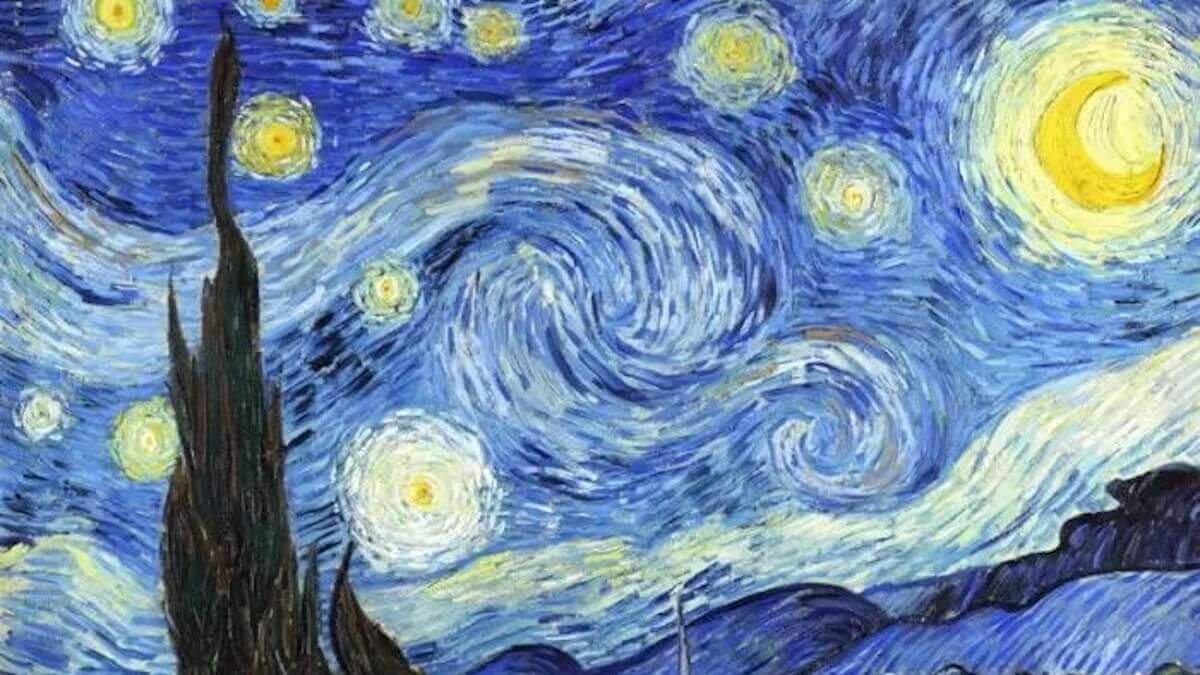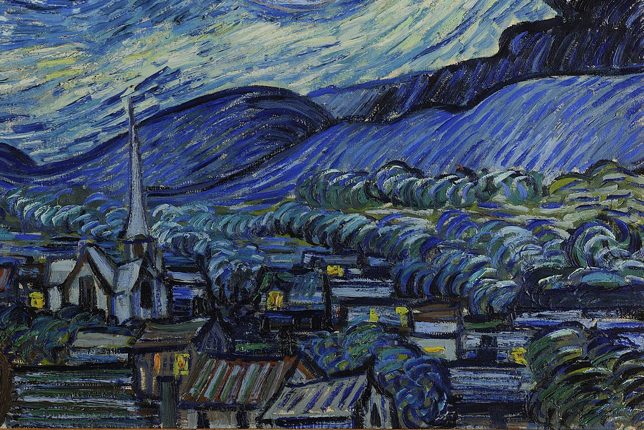
Artwork Analysis: Starry Night by Van Gogh

Artsper invites you to dive into the depths of Vincent van Gogh’s Starry Night. Although this mythical work has been immensely studied and commented on, its details continue to captivate and fascinate us.
This painting is a representation of what Van Gogh could see and reproduce from the asylum in St-Rémy-de-Provence. It was during this tormented period in his life that he painted one of art history’s most famous paintings, which has been a part of the MoMA’s permanent collection since 1941. While many would claim that this work is a cry of rebellion from a misunderstood genius, others agree that it is mostly a depiction of his fragile mental state. However, upon closer inspection, this work is not as crazy as it initially appears. The details of this work haven’t been created at random: rather, each element of the work has its own meaning; reinforcing the significance of this incredible piece.
1. The Spiral

Undoubtedly, the spirals are the first aspect of the painting that captures our attention. The large whirling shapes engulfs the painting like a wave. It inhales the viewer’s gaze leaving them dizzy and dazed, offering an insight into the depths of Van Gogh’s delicate mind. However, what if this spiral was simply inspired by the increasingly popular study of astronomy in the 19th century? Van Gogh was infatuated with astronomy and regularly read the magazine L’Astronomie, which was edited by his friend Camille Flammarion. In order to depict his troubled psyche, he imitated scientific reproductions of nebulae. Therefore, the spiral was not a madness-induced creation, but rather a study of one of Van Gogh’s main interests.
2. The Sky

The sky ripples and flows like a river, captivating the viewer with its humanlike energy. There is certainly a spiritual aspect to the work, which is mirrored in Van Gogh’s letters to his brother at the time, where he speaks of a “terrible need of religion. So at night [he] goes out to paint the stars.” Therefore the sky becomes a means for Van Gogh to understand and explore one of the beliefs that preoccupies him the most; life after death. This preoccupation is highlighted in Van Gogh’s choice of color where dusty mauves and blue-black tones fill the sky, a choice that is reciprocated in his other works such as Café Terrace at Night and Starry Night over the Rhone.
3. The Moon and the Stars

Astrophysicists have established that the moon and stars depicted in Van Gogh’s sky match published astronomical observations in Saint-Rémy-de-Provence on May 25th, 1889. Capella was particularly bright when Van Gogh painted the sky in 1889, which is why we can see a much larger and more luminous star in his work. The moon, juste like the stars, produces an enormous amount of light, which is accentuated in the painting due to the use of concentric circles. However the light remains in the sky, it does not spread to the edges of the painting as the ground remains dark.
4. The Bell Tower and the Village

According to the layout of the asylum at Saint-Rémy-de-Provence, Van Gogh could only see a small plot of land from his room. Unlike the stars, the bell tower and village were not directly observed by the artist. Rather, he recreated them from his imagination. These two elements are at the bottom of the work, taking up just one third of the space. The houses have a quality of movement, and the dark outlines give the painting a stained-glass quality. The bell tower and church allow Van Gogh to accentuate the mystical and cosmic power of the sky.
5. The Cypress Tree

Finally, the cypress is also a major feature of the work and quite possibly one of the most important. Thick, tormented and rising like a flame, it bridges together the two halves of the painting: the sky and ground. Van Gogh’s decision to place it in the foreground was significant. The cypress is traditionally a tree associated with death, and according to Van Gogh, it was the only way of accessing a life beyond earth.
In conclusion…
This work remains both a portrayal of Van Gogh’s chaotic mind but also a depiction of his main interests. It is additionally indisputable proof of Van Gogh’s genius and incomparable talent.

About Artsper
Founded in 2013, Artsper is an online marketplace for contemporary art. Partnering with 1,800 professional art galleries around the world, it makes discovering and acquiring art accessible to all.
Learn more













